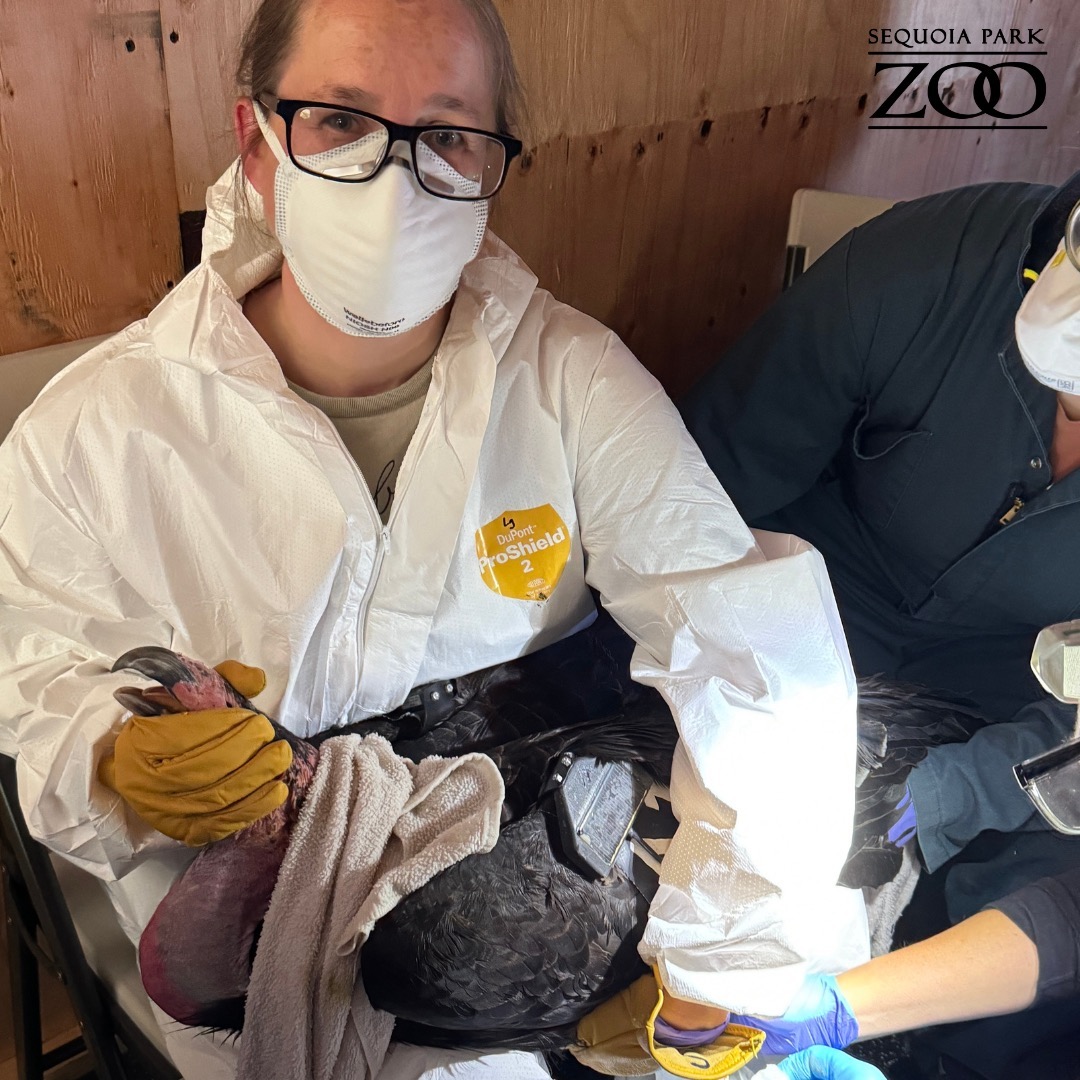- The success of the Spring 2024 trapping event and health evaluations by the Northern California Condor Restoration Program (NCCRP)
- The importance of health monitoring and veterinary care in the conservation efforts for the California condor
- The role of Sequoia Park Zoo and the collaboration with the Yurok Tribe Wildlife Department in conserving California condors
- The significance of the absence of detectable lead levels in all monitored California condors.
- The impact of community engagement and educational outreach through platforms like the NCCRP Facebook page
Thrilling news emerged this week from the Northern California Condor Restoration Program: All 11 locally reintroduced California condors passed their health evaluations with flying colors. Not a single bird showed detectable levels of lead in their blood, a monumental step towards securing their survival. This achievement marks a significant victory in the fight against lead poisoning, the most pernicious threat facing these majestic birds in the wild.
The Spring 2024 trapping event was a concerted effort by the Yurok Tribe’s Wildlife Department and Sequoia Park Zoo, galvanizing biologists, veterinarians—including the zoo’s medical expert—and other key participants in the conservation initiative. These trapping events, which are conducted biannually, are vital to the ongoing health monitoring of the condor population. Physical examinations, blood tests for diseases and contaminants, avian influenza screenings, transmitter and tag replacements, and necessary vaccinations form the core activities of these comprehensive health checks.
Sequoia Park Zoo’s integral role in the NCCRP extends beyond these events. With a dedicated Condor Care Center, the zoo and staff pride themselves on responding promptly to any health concerns among the wild condor population. This steadfast commitment ensures that professional care is never more than a call away for these endangered giants of the sky.
Emphasizing the collaborative nature of conservation work, the zoo staff joined forces with the Yurok Tribe’s Wildlife Department and other program participants. Their combined expertise provides a multidisciplinary approach to ensure the well-being of the condors. Each professional plays a distinct yet synchronized role, from the fine-tuned skills of veterinarians in identifying health issues to the knowledgeable interpretation of data by wildlife biologists.
Equally noteworthy is the fact that the recent health checks revealed no lead poisoning among the condors. Lead toxicity is often a result of ingestion of bullet-contaminated carrion and remains a persistent danger to scavenging birds. The absence of lead in these assessments is a testament to the effectiveness of ongoing advocacy for non-lead ammunition and the careful management of condor feeding stations to offer clean, uncontaminated food sources.
The NCCRP encapsulates the synergy necessary for effective wildlife conservation. Programs like these are crucial not only for the individual welfare of the birds but also for the larger conservation strategy to rehabilitate the California condor population across their historical range. By recognizing the critical issues and addressing them proactively, the NCCRP is a beacon of hope in the daunting world of wildlife conservation.
Community engagement has proven vital in conservation narratives, and the program’s visibility through social media platforms, such as the NCCRP Facebook page, serves as an educational bridge to the public. Showcasing everything from majestic images of soaring condors in their natural habitat to behind-the-scenes glimpses of veterinary exams propels public interest and support. These snapshots into the program’s activities foster a connection between the community and the conservation work, thereby bolstering the cause with an essential layer of societal support.
The California condor’s journey demonstrates nature’s resilience when supported by dedicated conservation efforts. From the brink of extinction, these birds are re-establishing their presence in the skies of California, thanks to the detailed work of conservationists, wildlife experts, and zoological institutions like Sequoia Park Zoo. Through meticulous observation, health management, and education, the future for the California condor looks brighter than it has in decades.
Each piece of positive news, such as this spring’s health evaluation results, propels the conversation and commitment forward. It shines a spotlight on the intricate balance between human activity and wildlife conservation, reiterating the fundamental notion that with collaboration, education, and constant vigilance, the comeback story of the California condor will continue to inspire and motivate a new generation of conservationists. The success of these stunning creatures, once teetering on the edge of oblivion, now soaring free and healthy, is a potent symbol of the triumphs possible in safeguarding our planet’s biodiversity.
*****
Source Description
More exciting California condor news this week! Through the Northern California Condor Restoration Program (NCCRP), all 11 of the local reintroduced California condors underwent health evaluations and looked great. Field tests revealed that no birds had detectable levels of lead in their blood. This is excellent news because lead poisoning remains the biggest threat for California condors and their survival in the wild.
Sequoia Park Zoo staff joined the Yurok Tribe’s Wildlife Department biologists, veterinarians including our Zoo’s veterinarian, and other program participants for this 2024 Spring Trapping event. The NCCRP undertakes these California condor trapping events twice per year to do physical health exams, draw blood to look for specific health issues such as disease and contaminants, test birds for avian influenza, replace transmitters and tags, and administer necessary vaccines.
As part of our role in this program, Sequoia Park Zoo’s Condor Care Center and our staff are always on call and available if any health issues arise for these wild condors.
For more details, visit the NCCRP Facebook page www.facebook.com/YurokCondors
Photos: NCCRP (outdoor condors) and Sequoia Park Zoo (exam photo)

